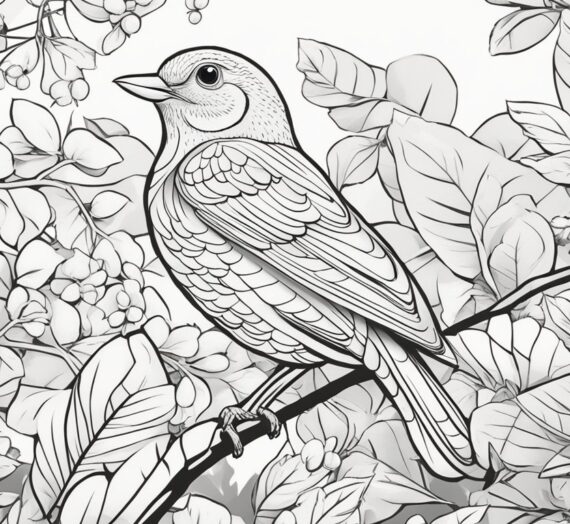Flamingo Coloring Page: Free Printable Sheets for Kids and Adults. Flamingos are known for their vibrant pink feathers and unique bodies. They are fascinating birds that have captured the attention of people all over the world. Flamingo coloring pages have become increasingly popular among children and adults alike, providing a fun and creative way to learn more about these graceful creatures.
Flamingo Coloring Page



Whether you are looking for realistic or cute designs, there are numerous flamingo coloring pages available for download and print. Some pages feature flamingos in various settings and backgrounds, while others showcase different species and styles of these beautiful birds. Additionally, some pages provide fun facts about flamingos, allowing children to learn while they color.
Overall, flamingo coloring pages offer a fun and engaging way to explore the world of these fascinating birds. They provide a creative outlet for children and adults alike, while also promoting learning and appreciation for nature. With so many options available, there is a flamingo coloring page for everyone to enjoy.
The Flamingo: An Overview
The flamingo is a unique and fascinating bird that is known for its distinctive pink coloration and long, thin legs. These birds are found in various parts of the world, including Africa, South America, and the Caribbean. They are social creatures that live in large flocks and are known for their graceful movements and loud, honking calls.
One of the most striking features of the flamingo is its pink coloration. This color is not actually present in the bird’s feathers, but rather in the pigments of the algae and crustaceans that the flamingo eats. Flamingos are also known for their long, thin legs, which are adapted for wading in shallow water. Their beaks are also uniquely shaped, with a downward curve that allows them to filter food from the water.
Flamingos are social birds that live in large flocks, sometimes numbering in the thousands. They are often seen standing on one leg, which is a behavior that helps them conserve body heat. Flamingos are also known for their graceful movements, which include synchronized group flights and elaborate courtship dances.
In terms of conservation, flamingos are considered a species of least concern by the International Union for Conservation of Nature (IUCN). However, some populations are threatened by habitat loss and pollution. Efforts are underway to protect these birds and their habitats, including the creation of protected areas and the restoration of wetlands.
Overall, the flamingo is a fascinating and unique bird that is known for its distinctive coloration, graceful movements, and social behavior. While some populations are threatened, conservation efforts are underway to protect these birds and ensure their survival for generations to come.
Coloring Page Basics



Coloring pages have been a popular activity for children and adults alike for many years. They are a great way to relax and unwind while also being a fun and creative outlet. Flamingo coloring pages are a particular favorite, with their vibrant pink feathers and unique body shape.
When it comes to coloring pages, there are a few basic things to keep in mind. First, it is important to choose the right materials. Coloring pages can be printed on a variety of paper types, but it is best to use a heavier weight paper to prevent bleed-through. It is also important to choose the right type of coloring tool, such as markers, colored pencils, or crayons, depending on personal preference and the desired effect.
Once the materials have been chosen, it is time to start coloring. Many people prefer to start with the larger areas first, such as the flamingo’s body, and then move on to the smaller details. It can also be helpful to use a light touch when coloring to avoid pressing too hard and damaging the paper.
Another important aspect of coloring pages is color choice. Flamingos are known for their pink feathers, but there are many other colors that can be used to create a unique and interesting coloring page. Some people prefer to stick to more natural colors, while others enjoy using bright and bold hues to make their coloring pages stand out.
Overall, coloring pages are a fun and relaxing activity that can be enjoyed by people of all ages. With a little creativity and the right materials, anyone can create a beautiful and unique flamingo coloring page.
Flamingo Anatomy for Artists
Flamingos are known for their unique and graceful appearance, making them a popular subject for artists of all levels. Understanding the anatomy of these birds is crucial for creating accurate and realistic flamingo coloring pages. Here are some key features of the flamingo’s anatomy that artists should keep in mind:
Body Shape
Flamingos have a distinct body shape that sets them apart from other birds. Their long legs and necks give them a tall and elegant appearance, while their plump bodies provide a contrast to their slender limbs. Artists should pay close attention to the proportions of the flamingo’s body, ensuring that the legs and neck are appropriately elongated and the body is appropriately plump.
Feathers
Flamingos have unique feathers that are essential to their distinctive appearance. Their feathers are pink due to their diet of algae and crustaceans, but they are not uniformly colored. Instead, the feathers have a gradient of pink shades, with darker feathers near the wingtips and lighter feathers near the body. Artists should consider this gradient when coloring the feathers, using a range of pink shades to create a realistic effect.
Beak
The flamingo’s beak is another important feature that artists should pay attention to. The beak is long and thin, with a distinctive downward curve near the tip. It is used to filter food from the water, so it should be depicted as slightly open in most flamingo coloring pages. The color of the beak varies depending on the species of flamingo, so artists should research the specific species they are drawing to ensure accuracy.
Eyes
The eyes of the flamingo are relatively small and located on the sides of the head. They are typically black or dark brown in color. When drawing or coloring the eyes, artists should keep in mind the position of the eyes on the head, as well as the size and color.
Legs and Feet
Flamingos have long, slender legs with three toes on each foot. The toes are webbed, which helps the flamingo to swim and walk on soft mud. The legs and feet are typically a pale pink color, although the shade can vary depending on the species. Artists should pay attention to the length and shape of the legs, as well as the position of the toes, when drawing or coloring the flamingo’s legs and feet.
Overall, understanding the anatomy of the flamingo is essential for creating accurate and realistic flamingo coloring pages. By paying attention to the body shape, feathers, beak, eyes, legs, and feet, artists can create beautiful and lifelike depictions of these unique birds.
Color Selection for Flamingo Pages



When it comes to coloring flamingo pages, there are a few things to keep in mind to ensure that the final product looks stunning. The first thing to consider is the color of the flamingo itself. Flamingos are known for their bright pink color, but there are actually different shades of pink that can be used to color them.
A light pink color can be used to color the feathers of the flamingo, while a darker pink can be used to add depth and shading. It’s important to use a light hand when coloring the feathers to achieve a more natural look.
In addition to pink, other colors can be used to add interest to the flamingo page. For example, shades of blue and green can be used to color the water or background, while yellow and orange can be used to color the beak and legs of the flamingo.
When selecting colors for a flamingo page, it’s important to keep in mind the overall composition of the page. Using too many bright colors can make the page look cluttered and overwhelming, while using too few colors can make the page look dull and uninteresting. A balance between different colors is key to creating a visually appealing flamingo page.
In conclusion, selecting the right colors for a flamingo page can make all the difference in the final product. By keeping in mind the natural colors of the flamingo and using a balanced color palette, anyone can create a beautiful and eye-catching flamingo coloring page.
Drawing Techniques and Tips
When it comes to coloring a flamingo, there are a few techniques and tips that can help make the process easier and more enjoyable. Here are some suggestions to keep in mind:
1. Start with a Light Hand
When you first begin coloring your flamingo, it’s important to start with a light hand. This means using a light touch and light pressure when applying color to the page. By starting with a light hand, you can gradually build up the color and avoid making mistakes or applying too much color too quickly.
2. Use a Variety of Colors
Flamingos are known for their vibrant pink color, but they actually come in a variety of shades ranging from pale pink to deep red. To create a more realistic and visually interesting flamingo, consider using a variety of colors when coloring. Experiment with different shades of pink, red, and even orange to create a unique and eye-catching flamingo.
3. Add Texture and Detail
To make your flamingo coloring page really stand out, try adding texture and detail to the bird’s feathers and body. Use different coloring techniques such as cross-hatching, stippling, or blending to create a sense of depth and dimension. You can also add small details such as highlights, shadows, or patterns to give your flamingo a more realistic and visually interesting appearance.
4. Have Fun and Be Creative
Above all, remember to have fun and be creative when coloring your flamingo. Don’t be afraid to experiment with different colors, techniques, and styles to create a unique and personalized flamingo that reflects your own artistic style and personality. With a little practice and patience, you can create a beautiful and vibrant flamingo coloring page that you’ll be proud to display.
Flamingo Habitats and Environment




Flamingos are known for their striking pink color and unique physical features, but they are also fascinating creatures when it comes to their habitats and environment. These birds are found in various parts of the world, from Africa and South America to the Caribbean and Florida.
Flamingos prefer to live in habitats that are close to shallow water bodies such as lagoons, salt pans, and wetlands. These habitats provide the ideal environment for flamingos to feed, breed, and rest. Flamingos are filter feeders, and they use their uniquely shaped bills to filter water and extract small organisms such as algae, shrimp, and crustaceans.
Flamingos are social birds and live in large flocks that can number in the thousands. These flocks provide protection for the birds from predators such as crocodiles and eagles. Flamingos also have a unique way of communicating with each other by using a variety of vocalizations and body language.
The habitat of flamingos is under threat due to various factors such as climate change, human encroachment, and pollution. These factors have led to a decline in the population of flamingos in some parts of the world. Efforts are being made to conserve and protect the habitats of flamingos to ensure their survival.
In conclusion, flamingos are fascinating birds that are adapted to living in unique habitats such as lagoons and wetlands. Their filter feeding behavior and social nature make them interesting creatures to study. However, their habitats are under threat, and conservation efforts are needed to ensure their survival in the wild.
Cultural Significance of Flamingos
Flamingos have a rich cultural significance across various cultures. In ancient Egypt, flamingos were considered sacred birds and were associated with the god Ra. They were also believed to represent the sun and the color red, which was associated with life and rebirth.
In Caribbean cultures, flamingos are believed to bring good luck and are often associated with beauty, balance, and grace. They are also considered symbols of love and friendship.
In Hinduism, the flamingo is associated with the god of love, Kamadeva, and is believed to represent the power of love and desire.
In addition to their cultural significance, flamingos are also important ecologically. They play a vital role in maintaining the health of wetland ecosystems by feeding on algae, shrimp, and other small organisms. They are also important indicators of environmental health, as their populations are sensitive to changes in water quality and habitat conditions.
Overall, flamingos have a significant cultural and ecological importance, and their unique appearance and behavior continue to fascinate people around the world.
Flamingo Conservation Status
Flamingos are a group of wading birds that are known for their long legs, curved bills, and bright pink feathers. These birds are found in many parts of the world, including Africa, Asia, the Americas, and Europe. While flamingos are not currently endangered, several species are considered to be at risk due to habitat loss, hunting, and other factors.
The International Union for Conservation of Nature (IUCN) has classified six of the seven flamingo species as either “Least Concern” or “Near Threatened.” The exception is the Andean flamingo, which is considered to be “Vulnerable” due to its small population size and limited range.
One of the biggest threats to flamingos is habitat loss. These birds rely on wetlands, lagoons, and other shallow water bodies for feeding, breeding, and nesting. However, many of these habitats are being destroyed or degraded due to human activities such as agriculture, urbanization, and mining. In addition, climate change is causing changes in water levels and temperatures, which can also impact flamingo populations.
Another threat to flamingos is hunting. In some parts of the world, flamingos are hunted for their meat, eggs, or feathers. This can have a significant impact on local populations, especially if hunting is not regulated or monitored.
To help protect flamingos, conservation efforts are underway in many parts of the world. These efforts include habitat restoration, captive breeding programs, and education and outreach programs to raise awareness about the importance of these birds. By working together, scientists, conservationists, and local communities can help ensure that flamingos continue to thrive in the wild for generations to come.
Printing and Paper Recommendations
When it comes to printing flamingo coloring pages, there are a few recommendations to keep in mind for the best results. First, it is important to use high-quality paper that is thick enough to handle coloring materials without bleeding or tearing. For best results, use paper with a weight of at least 80lb or higher.
In addition to paper quality, it is also important to adjust printer settings for optimal printing. To ensure that the colors are vibrant and accurate, it is recommended to use the printer’s highest quality setting. This will produce the best possible results and make the coloring pages look more professional.
It is also worth noting that some flamingo coloring pages may be designed for specific paper sizes, such as letter or A4. Be sure to check the page size before printing to avoid any issues with scaling or cropping.
Overall, by following these simple recommendations, anyone can produce high-quality, vibrant flamingo coloring pages that are sure to delight both kids and adults alike.
Digital Coloring Options
For those who prefer to color digitally, there are many options available. One popular choice is to use a tablet or computer with a stylus and a digital coloring app. These apps often provide a wide range of colors and tools, such as brushes and pencils, that can be used to create intricate and detailed designs.
Another option is to use a website that offers free digital coloring pages. These websites often have a large selection of coloring pages to choose from, including many featuring flamingos. Users can color the pages using their mouse or trackpad, and can often save or print their finished creations.
Some digital coloring options also offer the ability to share finished designs with others. This can be a fun way to show off one’s creativity and connect with other coloring enthusiasts.
Overall, digital coloring can be a convenient and enjoyable way to color flamingo coloring pages. Whether using a tablet and stylus or a website, there are many options available to suit different preferences and skill levels.
Educational Benefits of Coloring Pages
Coloring pages are not just a fun activity for children, but they also offer several educational benefits. Here are a few reasons why coloring pages can be a valuable learning tool for kids:
1. Improves Motor Skills
Coloring requires the use of fine motor skills, which helps children develop hand-eye coordination and dexterity. As they color within the lines, they learn to control their movements and improve their grip on writing tools.
2. Enhances Focus and Concentration
Coloring pages can help children improve their focus and concentration. As they color, they become fully engrossed in the activity, which helps them tune out distractions and develop their attention span.
3. Stimulates Creativity and Imagination
Coloring pages provide an outlet for children to express their creativity and imagination. They can experiment with different colors, patterns, and designs to create unique and original artwork.
4. Introduces New Concepts and Vocabulary
Coloring pages can also be used as a tool to introduce new concepts and vocabulary to children. For example, a flamingo coloring page can teach children about the unique characteristics of flamingos, such as their pink feathers, long legs, and curved beaks.
Overall, coloring pages can be a valuable educational tool for children, helping them develop important skills while having fun and expressing their creativity.
Creative Projects with Flamingo Coloring Pages
Flamingo coloring pages are not only a fun activity for kids but also a great way to explore one’s creativity. Once the coloring is done, the pages can be used in various creative projects. Here are some ideas to get started:
1. Flamingo Party Decorations
Flamingo-themed parties are very popular, and the coloring pages can be used to make decorations for such parties. One can cut out the colored flamingos and use them to make banners, garlands, and centerpieces. The flamingos can be glued onto sticks and used as cupcake toppers or cake decorations.
2. Flamingo Greeting Cards
Flamingo coloring pages can be used to make unique greeting cards. One can cut out the colored flamingos and glue them onto blank cards. The cards can be further decorated with stickers, glitter, and other embellishments. These cards can be used for various occasions such as birthdays, thank you notes, and get well soon messages.
3. Flamingo Wall Art
Flamingo coloring pages can be used to make beautiful wall art. One can frame the colored pages and hang them on the walls. Alternatively, one can cut out the colored flamingos and arrange them in a pattern on a canvas or a board. The flamingos can be further decorated with paint, glitter, and other materials.
4. Flamingo Bookmarks
Flamingo coloring pages can be used to make bookmarks. One can cut out the colored flamingos and glue them onto cardstock paper. The bookmarks can be further decorated with stickers, sequins, and other embellishments. These bookmarks can be used to mark pages in books, journals, and planners.
In conclusion, flamingo coloring pages can be used in various creative projects. The possibilities are endless, and one can let their imagination run wild. With a little creativity and some basic crafting supplies, one can turn the coloring pages into unique and beautiful creations.
Sources for Flamingo Coloring Pages
Flamingo coloring pages are a great way to relax and unwind while exploring your creative side. Whether you are a child or an adult, there are plenty of sources available to find free and printable flamingo coloring pages.
One great source for flamingo coloring pages is Monday Mandala. They offer 24 unique flamingo coloring pages that are all free to download and print. The illustrations feature flamingos in different styles and levels of difficulty, making them appealing to a wide range of ages and skill levels.
Another source for flamingo coloring pages is Mom Loves Best. They offer 25 free printable flamingo coloring sheets that are designed to provide an easy, fun, and engaging coloring experience for kids and adults alike. These pages are crafted with vibrant colors and intricate designs that are sure to keep you entertained for hours.
For those looking for a larger collection of flamingo coloring pages, ColoringPagesOnly.com is a great resource. They offer 75 flamingo coloring pages that are perfect for kids and adults who love these graceful birds. The pages feature a variety of flamingo species, including Caribbean and American flamingos, and offer a great way to learn more about these fascinating creatures.
Lastly, WONDER DAY provides 100 printable flamingo coloring pages. These black and white images feature the lovely flamingo bird, which is famous for its pale pink color. The pages showcase the characteristics of flamingos living on the water, including long legs, flexible necks, and large beaks.
Overall, there are plenty of sources available to find free and printable flamingo coloring pages that are perfect for relaxing and exploring your creative side.
Legal Considerations for Publishing Coloring Pages
Publishing coloring pages is a fun and creative way to share artwork with others. However, it is important to consider the legal implications of publishing coloring pages before making them available to the public. Here are a few legal considerations to keep in mind:
Copyright Law
Copyright law protects original works of authorship, including coloring pages. If you create your own coloring pages, you automatically own the copyright to those pages. However, if you use someone else’s artwork or images, you may be infringing on their copyright. It is important to obtain permission or a license to use any copyrighted material in your coloring pages.
To register your coloring book with the Copyright Office, you will need to complete a registration form, pay a fee, and submit a copy of your work. This process provides a public record of your copyright claim and is crucial in the event you need to take legal action against copyright infringement.
Trademark Law
Trademark law protects words, phrases, symbols, or designs that identify and distinguish the source of goods or services. If you use a trademarked name or logo in your coloring pages, you may be infringing on someone else’s trademark. It is important to conduct a trademark search before using any trademarked names or logos in your coloring pages.
Publicity Rights
Publicity rights protect an individual’s right to control the commercial use of their name, image, or likeness. If you use someone’s name, image, or likeness in your coloring pages without their permission, you may be infringing on their publicity rights. It is important to obtain permission before using anyone’s name, image, or likeness in your coloring pages.
Conclusion
In conclusion, publishing coloring pages can be a fun and creative endeavor, but it is important to consider the legal implications before making them available to the public. Copyright, trademark, and publicity laws should be carefully considered to ensure that your coloring pages are not infringing on anyone’s rights. By taking the necessary steps to protect your coloring pages, you can ensure that your artwork is enjoyed by others without any legal issues.



